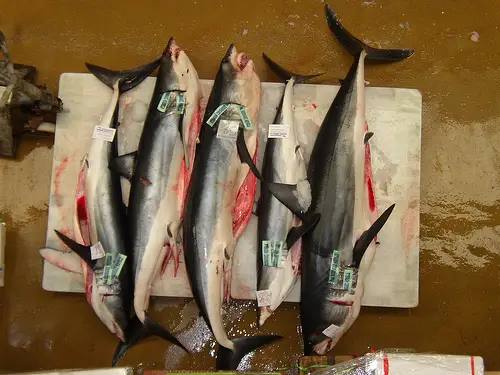Cone Shellfish
One of the most dangerous types of fish are found in the tropical waters around Australia.
Called the Cone Shellfish, they are about ten centimeters long with the largest recorded being only about 20 CM long.
A cone shellfish uses darts to kill their prey and to fend off unwelcome visitors to their space.

The anatomy of a Cone Shellfish
Twenty to thirty extremely poisonous darts are kept in a pool of poison inside the mouth of a cone shellfish.
Each dart is attached to the shellfishes body, is hollow and completely filled with a poison that attacks the central nervous system, causing paralysis, nausea, dizziness, weakness in nearly all voluntary and involuntary muscle and eventually, if left untreated, sometimes death.
According to authorities: “When a person is stung by a Cone Shellfish the first symptom is a sharp pain around the sting.
This is followed by a burning pain around the area. It then becomes numb and is beginning to swell. All the normal symptoms develop quickly, such as impaired vision, speech, swallowing, hearing and much more.
Next the victim will have weakness in voluntary muscles. This is followed by dizziness and nausea. If the victim receives a severe sting from a C.geographus, it will cause paralysis to the heart and lungs, it can be followed by death. A less serious sting the victim will recover from a few hours to several weeks. At this time a great effort will exhaust the victim easily. Cone Shellfish bites are a lot like a wasp sting.”

The Cone Shellfish
Cone Shellfish are extremely beautiful and many times the visitor or tourist will attempt to pick one up, however to do so without knowing what you pick up can be extremely dangerous.
They can also extend their snouts to make it nearly as long as their own bodies.



Is the Cone Shellfish the same thing as the Conus, Cone Shell or the Cone Snail? [C, CS & CS are all the same thing] if yes, then I can use this information for my Conus report. If not, then please reply urgently before my due date.
Thankyou.
Well, as far as I know it is. If I’m wrong, and the Conus is not the Cone Shellfish then tell me, okay?
well a cone shellfish sounds scary and a dangerous creauture wouldn’t want 2 go near 1 but i am australian still!!